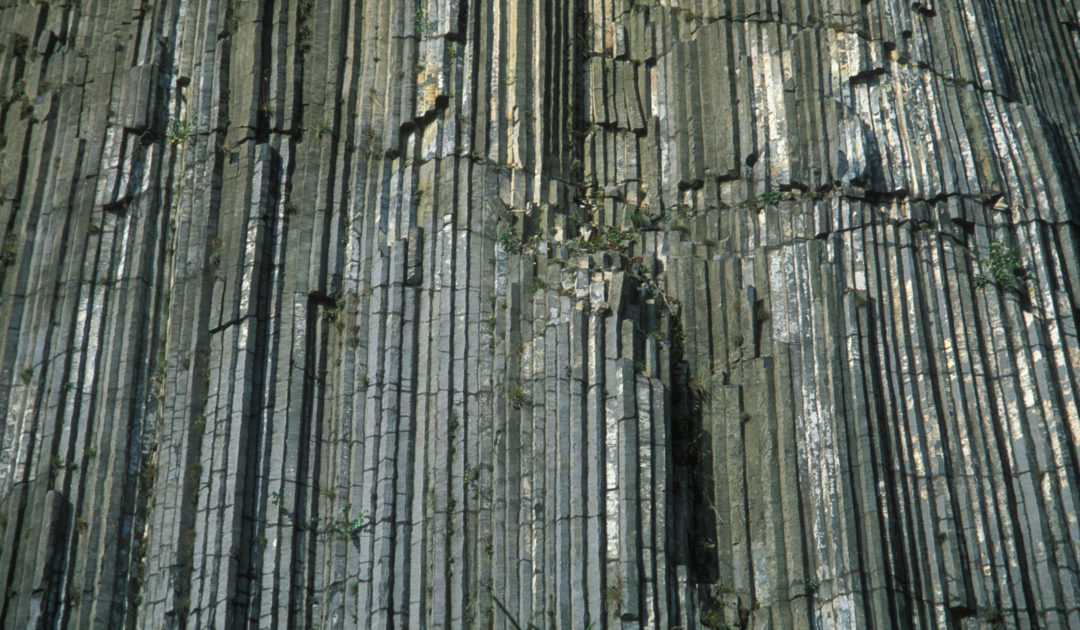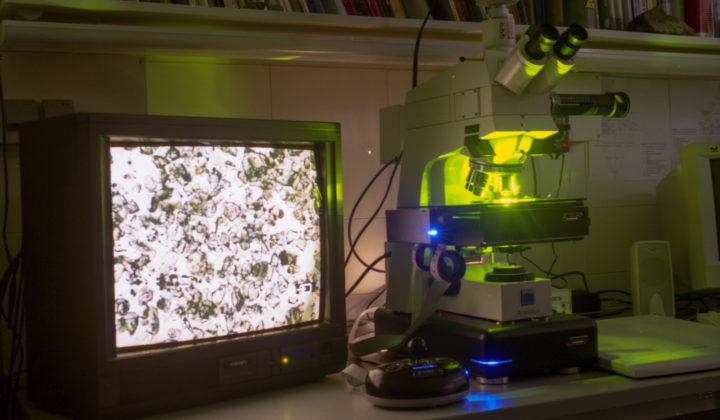
The Petrography Section is focused on the research on the reconstruction of uplift and fluvial history of Saxony. Here, work on sedimentary petrography of the ancient Elbe is of particular interest. More attention is devoted to the exploration of distal ejecta of the Ries crater, so-called tektites. This contributes to the overall understanding of the Ries impact event and its consequences for the former Central European landscape. Still a new field of work in the section is rock identification and provenance determination of archaeological material. The section‘s research topics contribute to the research activity Deep time: Evolving Earth and Palaeoenvironments within the research field Biodiversity and Earth System Dynamics.
Another area is the support of the extensive petrographic collections. The comprehensive collections of over 70,000 rocks split into several special sections. The collection of Saxonian rocks contains a large completeness of rock units from all over this state. Many of these specimens serve as unique reference samples. Of further importance are the collections of non-Saxonian rocks, of fluvial and glacial boulders and of building and decoration stones. Additionally, a collection of microscopic thin section as well as a collection for teaching and training purposes exist.
Laboratories
The laboratories of the section fulfill important service functions for research and advice, both inside and outside the institute:
For the mineral separation and grain size analysis a processing laboratory is available.
In the grinding and preparation laboratory, various cutting, grinding and polishing machines are used for polished and thin section preparation.
In the fission track laboratory, fission track data from the Saxonian basement and from the Ries crater are modeled.
The X-ray fluorescence laboratory provides analysis for geochemical composition of geological and archaeological samples.
Another area is the support of the extensive petrographic The comprehensive collections of over 70,000 rocks split into several special sections. The collection of Saxonian rocks contains a large completeness of rock units from all over this state. Many of these specimens serve as unique reference samples. Of further importance are the collections of non-Saxonian rocks, of fluvial and glacial boulders and of building and decoration stones. Additionally, a collection of microscopic thin section as well as a collection for teaching and training purposes exist.
The history dates back to 1560, when Elector August built the Electoral Art Chamber. In 1587, the collection of Saxonian rocks of the Swiss court sculptor and builder Giovanni Maria Nosseni was already an important component. The petrographic collections would sense recovery through the work of Ernst Kalkowsky, who acquired a large number of rock specimens and thin sections. The long-time curator of the collection, Dieter Beeger, established a comprehensive collection of building and decoration stones.
The staff of the Petrography Section are involved with teaching at universities in Saxony, particularly at the Bergakademie Freiberg Technical University and the Dresden Technical University, and take responsibilities at various forms of academic qualifications (diploma, bachelor, master and doctoral theses). There is the possibility of a scientific training for young academics at the division. Furthermore, internships are offered in the context of vocational or university education.






